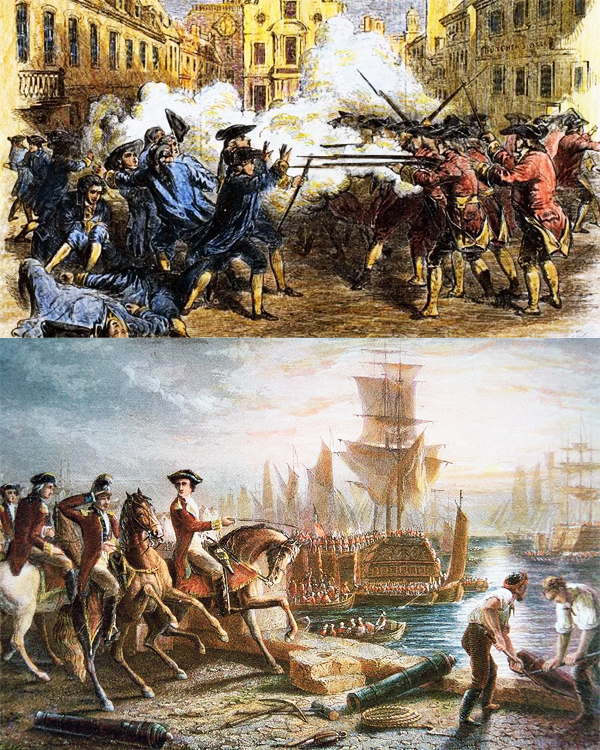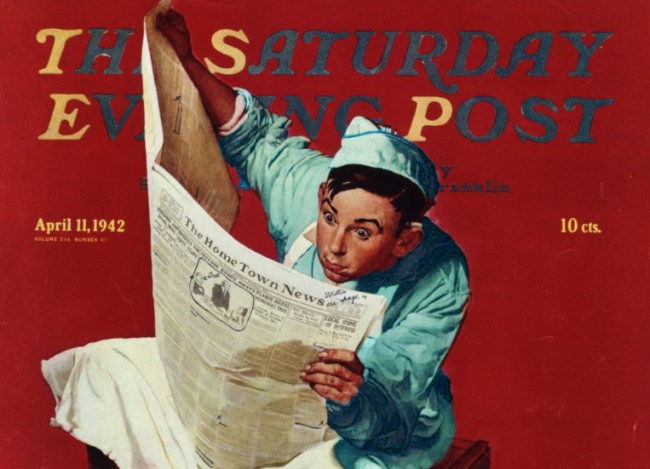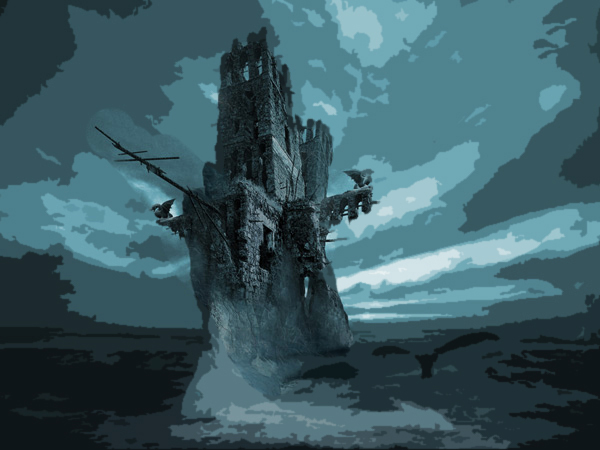
The United States launches the Vanguard 1 satellite on March 17, 1958
The United States launches the Vanguard 1 satellite: On March 17, 1958 from Cape Canaveral, Florida, Vanguard 1 became the fourth artificial Earth orbital satellite to be successfully launched (following Sputnik 1, Sputnik 2, and Explorer 1). Vanguard 1 was the first satellite to have solar electric power.
America's first official space satellite program begun in September 1955. Vanguard I has the distinction of being the oldest artificial satellite orbiting the earth. Its predecessors, Sputniks I and II and Explorer I, have since fallen out of orbit.
The International Geophysical Year, U.S. Naval Research Laboratory (NRL) was officially delegated the responsibility of placing an artificial satellite with a scientific experiment into orbit around the earth. NRL developed the launch vehicles; developed and installed the satellite tracking system; and designed, constructed and tested the satellites in a program headed by Dr. John Hagen. NRL's proposal to conduct Project Vanguard was based on experience gained from extensive use of German V-2 and Viking rockets to probe the earth's upper atmosphere.
Following Vanguard's launch the 3-pound satellite made more than 196,990 revolutions of the earth and travelled 5.7 billion nautical miles, the distance from earth to beyond the planet Pluto and halfway back. In that time it has provided a wealth of information on the size and shape of the earth, and set a number of space records as well.
Vanguard I introduced much of the technology that has been applied in other U.S. satellite programs. For example, it proved that solar cells could be used for several years to power radio transmitters. Vanguard's solar cells operated for about seven years, while conventional batteries used to power another onboard transmitter lasted only 20 days. Now the oldest man-made satellite in orbit, Vanguard I has been 100 percent successful in meeting its scientific objectives.
Vanguard I HAS accomplished the following:
• First orbiting package to be powered by solar energy.
• Returned a wealth of information on air density,
• Temperature ranges and micrometeorite impact.
• Maintained an orbit so stable that cartographers were able to more accurately redrawn maps of islands in the Pacific Ocean.
• Revealed that the earth is slightly pear-shaped rather than round.
United States Naval Research / Wikipedia / Encyclopedia Britannica / NASA / Encyclopedia Britannica / Space.com
/ The United States launches the Vanguard 1 satellite on March 17, 1958 (YouTube) 

World War II: Battle of Nanchang begins on March 17, 1937
World War II: Battle of Nanchang: In 1937, over a period of six weeks, Imperial Japanese Army forces brutally murdered hundreds of thousands of people–including both soldiers and civilians–in the Chinese city of Nanking (or Nanjing). The horrific events are known as the Nanking Massacre or the Rape of Nanking, as between 20,000 and 80,000 women were sexually assaulted. Nanking, then the capital of Nationalist China, was left in ruins, and it would take decades for the city and its citizens to recover from the savage attacks.
Preparing for Invasion
Following a bloody victory in Shanghai during the Sino-Japanese War, the Japanese turned their attention towards Nanking. Fearful of losing them in battle, Nationalist leader Chiang Kai-Shek ordered the removal of nearly all official Chinese troops from the city, leaving it defended by untrained auxiliary troops. Chiang also ordered the city held at any cost, and forbade the official evacuation of its citizens. Many ignored this order and fled, but the rest were left to the mercy of the approaching enemy.
A small group of Western businessmen and missionaries, the International Committee for the Nanking Safety Zone, attempted to set up a neutral area of the city that would provide refuge for Nanking’s citizens. The safety zone, opened in November 1937, was roughly the size of New York’s Central Park and consisted of more than a dozen small refugee camps. On December 1, the Chinese government abandoned Nanking, leaving the International Committee in charge. All remaining citizens were ordered into the safety zone for their protection.
Arrival of the Troops
On December 13, the first troops of Japan’s Central China Front Army, commanded by General Matsui Iwane, entered the city. Even before their arrival, word had begun spreading of the numerous atrocities they had committed on their way through China, including killing contests and pillaging. Chinese soldiers were hunted down and killed by the thousands, and left in mass graves. Entire families were massacred, and even the elderly and infants were targeted for execution, while tens of thousands of women were raped. Bodies littered the streets for months after the attack. Determined to destroy the city, the Japanese looted and burned at least one-third of Nanking’s buildings.
Though the Japanese initially agreed to respect the Nanking Safety Zone, ultimately not even these refugees were safe from the vicious attacks. In January 1938, the Japanese declared that order had been restored in the city, and dismantled the safety zone; killings continued until the first week of February. A puppet government was installed, which would rule Nanking until the end of World War II.
Aftermath of the Massacre
There are no official numbers for the death toll in the Nanking Massacre, though estimates range from 200,000 to 300,000 people. Soon after the end of the war, Matsui and his lieutenant Tani Hisao, were tried and convicted for war crimes by the International Military Tribunal for the Far East and were executed. Anger over the events at Nanking continues to color Sino-Japanese relations to this day. The true nature of the massacre has been disputed and exploited for propaganda purposes by historical revisionists, apologists and Japanese nationalists. Some claim the numbers of deaths have been inflated, while others have denied that any massacre occurred.
History Channel / Wikipedia / New World Encyclopedia / World War II Database
/ World War II: Nanchang Massacre March 17, 1937 (YouTube) 

American Revolution: British forces evacuate Boston, ending the Siege of Boston on March 17, 1776
American Revolution: British forces evacuate Boston: On this day in 1776, British forces are forced to evacuate Boston following General George Washington’s successful placement of fortifications and cannons on Dorchester Heights, which overlooks the city from the south, ending the Siege of Boston.
During the evening of March 4, American Brigadier General John Thomas, under orders from Washington, secretly led a force of 800 soldiers and 1,200 workers to Dorchester Heights and began fortifying the area. To cover the sound of the construction, American cannons, besieging Boston from another location, began a noisy bombardment of the outskirts of the city. By the morning, more than a dozen cannons from Fort Ticonderoga had been brought within the Dorchester Heights fortifications. British General Sir William Howe hoped to use the British ships in Boston Harbor to destroy the American position, but a storm set in, giving the Americans ample time to complete the fortifications and set up their artillery. Realizing their position was now indefensible, 11,000 British troops and some 1,000 Loyalists departed Boston by ship on March 17, sailing to the safety of Halifax, Nova Scotia.
The bloodless liberation of Boston by the Patriots brought an end to a hated eight-year British occupation of the city, known for such infamous events as the “Boston Massacre”, in which five colonists were shot and killed by British soldiers. The British fleet had first entered Boston Harbor on October 2, 1768, carrying 1,000 soldiers. Having soldiers living among them in tents on Boston Common–a standing army in 18th-century parlance–infuriated Bostonians.
For the victory, General Washington, commander of the Continental Army, was presented with the first medal ever awarded by the Continental Congress
History Channel / Wikipedia / Encyclopedia Britannica / Massachusetts Historical Society / Mount Vernon.org
/ American Revolution: British forces evacuate Boston, ending the Siege of Boston on March 17, 1776 (YouTube) 

Understanding Military Terminology - Movement schedule
(DOD) A timetable developed to monitor or track the movement of a separate entity, whether it is a force requirement, cargo or personnel increment, or lift asset, that reflects the assignment of specific lift resources, shows a flow and workload at each location, and supports plan implementation.
Joint Publications (JP 4-09) Distribution Operations

The Old Salt’s Corner
“Ghost Ship Omen”
Scientists say it’s just a mirage,
but sailors claim the ghost ship floats
in air, with stormy seas below.
Again he tries to round Cape Hope.
Captain van der Decken angered God
one savage 18th Century night.
Vowed he’d sail till “Judgment Day”,
to cross the Table Bay, he’d fight.
The Flying Dutchman disappeared
sank deep in foggy, wind-swept sea,
but the captain’s doomed to walk the deck
each night in perpetuity.
King George the Fifth, the Prince of Wales
are two who saw the Dutchman.
Although these royal heirs survived,
most meet death - the captain’s omen.
His curse prevails in Wagner’s Opera
and Washington Irving’s story;
crews tremble, ghost ship emerges
Dutchman floats in frightening glory.
So many sailors and their ships
still meet demise on starless nights,
when demons steer the Dutchman
and a vengeful God reads last rites.
Till this day the Flying Dutchman
looms threatening on a ravaged sea.
For Judgment Day the captain waits,
luring crews to their destiny.
~ Carolyn Devonshire

“I’m Just Sayin”
“Sometimes I lie awake at night, and I ask,
‘Where have I gone wrong?’
Then a voice says to me,
‘This is going to take more than one night.'”
~ Charles M. Schulz
“Dear IRS,
I am writing to you to cancel my subscription.
Please remove my name from your mailing list.”
~ Snoopy

“Thought for the Day”
“I'm not crazy about reality,
but it's still the only place to get a decent meal.”
“Look at me. I worked my way up from nothing to a state of extreme poverty.”
“Please accept my resignation.
I don’t care to belong to any club that will have me as a member.”
~ Groucho Marx

“What I Learned”
“Anger is a thief who steals away the nice moments.”
“Can't or won't?”
“Everything is possible. The impossible just takes longer.”
~ Anonymous

Second Hand News (Links to Articles from Week 11 - March 11, 2019 - March 17, 2019)
 Democrats risk overreach in competing to investigate Trump
• Alexandria Ocasio-Cortez, other Democrats break with Pelosi on impeachment
• Elise Stefanik is pushing fellow Republicans to confront the party's woman problem
• Secretary of State Mike Pompeo withdrawing all personnel from U.S. Embassy in Venezuela
• New York attorney general subpoenas Deutsche Bank, Investors Bank for documents on Trump Organization projects
• White House press secretary Sarah Sanders refuses to say Democrats don't hate Jews
Democrats risk overreach in competing to investigate Trump
• Alexandria Ocasio-Cortez, other Democrats break with Pelosi on impeachment
• Elise Stefanik is pushing fellow Republicans to confront the party's woman problem
• Secretary of State Mike Pompeo withdrawing all personnel from U.S. Embassy in Venezuela
• New York attorney general subpoenas Deutsche Bank, Investors Bank for documents on Trump Organization projects
• White House press secretary Sarah Sanders refuses to say Democrats don't hate Jews
Editor's Picks:
Trump's 2020 budget calls for $2.7T in spending cuts, promises to erase deficit in 15 years
• Devin Nunes cites 'important' report ahead of Christopher Steele deposition release
• Glenn Greenwald 'mystified' how Democratic lobbyist Tony Podesta has 'just vanished'
Washington Examiner
 U.S. pulling out all remaining diplomatic personnel from Venezuela as the country descends into chaos amid a nearly week-long blackout
• America gets its ‘ass handed to it’ in WW3 simulations: U.S. forces are defeated by Russia and China in almost all scenarios, analysts warn
• Russia carries out first navy launch tests of its 'unstoppable' hypersonic missile - Putin's 'weapon of choice' to destroy U.S. cities
• Chinese official says 'Western forces' are trying to use Christianity to 'subvert' the country's political power
U.S. pulling out all remaining diplomatic personnel from Venezuela as the country descends into chaos amid a nearly week-long blackout
• America gets its ‘ass handed to it’ in WW3 simulations: U.S. forces are defeated by Russia and China in almost all scenarios, analysts warn
• Russia carries out first navy launch tests of its 'unstoppable' hypersonic missile - Putin's 'weapon of choice' to destroy U.S. cities
• Chinese official says 'Western forces' are trying to use Christianity to 'subvert' the country's political power
Passengers' revolt against death jet: Pressure mounts on Boeing as more airlines and countries ground Max 737 8 fleets after Ethiopian disaster
• Newlywed husband received a text from wife while she was on board doomed Ethiopian jet - but she was dead before he was able to reply
• Chicago Army captainamong the eight Americans killed in horrific Ethiopian Airlines plane crash that left all 157 passengers on board dead
• Facebook performs U-turn after removing Sen. Elizabeth Warren's ads calling for break up of social media giant and Amazon and Google because they have 'bulldozed the competition and used private information for profit'
• REVEALED: Google agreed to pay two top executives $135 MILLION in severance packages after they were BOTH accused of sexual misconduct
• Hundreds flock to a frozen Lake Michigan to see an underwater, 11ft marble crucifix with Jesus on that is visible for the first time in four years because of the extreme cold
Daily Mail UK
 Two dead after Chinese navy plane crashes
• ‘We will keep your secrets’, China promises foreign companies with new law
• U.S. and China escalate Huawei feud in Europe with warnings to Germany and Poland
• Malaysia, Australia and Singapore join list of countries grounding Boeing 737 MAX
Two dead after Chinese navy plane crashes
• ‘We will keep your secrets’, China promises foreign companies with new law
• U.S. and China escalate Huawei feud in Europe with warnings to Germany and Poland
• Malaysia, Australia and Singapore join list of countries grounding Boeing 737 MAX
North Korea Nuclear Crisis: U.S. envoy says ‘diplomacy still very much alive’ with North Korea
Most Read:
I’d side with rich China over fickle U.S.: Malaysia’s Mahathir Mohamad
• How could a sharp slowdown in China affect growth prospects for the rest of Asia?
• Who is JW00237? The secret Canadian campaign to ban Huawei’s Chinese ‘spies’, and the anonymous official at its heart
• The last king of Xinjiang: how Bertram Sheldrake went from condiment heir to Muslim monarch
Opinion:
Chinese business ‘held back by prejudice against private firms’
• For China, the only thing worse than Trump would be Hillary Clinton as president
• Why China should be free to let its currency act as a safety valve
• The ‘rule of law’, as preached - and practised - in China and Canada
South China Morning Post
 Theresa May’s Last Dash for a Deal (The British prime minister wins minor concessions to save Brexit - and her premiership.)
• The EU’s Next Big Election Is Heading for Disaster (If nationalists keep the momentum in the run-up to the European Parliament elections, the EU will never be the same again)
• Air Force’s $166 Billion Budget Would Help Revamp U.S. Nuclear Deterrent
• Mohammed bin Salman Is Here to Stay (The United States has to work with Saudi Arabia, so it has no choice but to work with its crown prince)
Theresa May’s Last Dash for a Deal (The British prime minister wins minor concessions to save Brexit - and her premiership.)
• The EU’s Next Big Election Is Heading for Disaster (If nationalists keep the momentum in the run-up to the European Parliament elections, the EU will never be the same again)
• Air Force’s $166 Billion Budget Would Help Revamp U.S. Nuclear Deterrent
• Mohammed bin Salman Is Here to Stay (The United States has to work with Saudi Arabia, so it has no choice but to work with its crown prince)
America’s Polarization Is a Foreign Policy Problem, Too (The fact that Democrats and Republicans hate each other is making the United States weaker)
• Astana Tries to Silence China Critics (Head of watchdog organization detained for work on Xinjiang camps)
• Everyone Wants a Piece of Afghanistan (U.S. withdrawal has opened the door to a possible political settlement, but success will depend on regional powers and the country’s neighbors_
• The Evolution of the Strongman (Why authoritarians have grown more liberal as democracies have grown more authoritarian)
Foreign Policy
 CORRUPTION CHRONICLES: JUDICIAL WATCH SUES FOR DEPUTY ATTORNEY GENERAL ROD ROSENSTEIN’S COMMUNICATIONS DURING TIME OF COMEY FIRING, MUELLER APPOINTMENT
• Judicial Watch Files Ethics Complaint Over Rep. Adam Schiff’s Contacts with Glenn Simpson and Michael Cohen
• Judicial Watch discusses new anti-Trump/Christopher Steele collusion documents, House Democrats Harass President Trump, & a NEW FISA abuse lawsuit
CORRUPTION CHRONICLES: JUDICIAL WATCH SUES FOR DEPUTY ATTORNEY GENERAL ROD ROSENSTEIN’S COMMUNICATIONS DURING TIME OF COMEY FIRING, MUELLER APPOINTMENT
• Judicial Watch Files Ethics Complaint Over Rep. Adam Schiff’s Contacts with Glenn Simpson and Michael Cohen
• Judicial Watch discusses new anti-Trump/Christopher Steele collusion documents, House Democrats Harass President Trump, & a NEW FISA abuse lawsuit
Judicial Watch Sues DOJ for Records on Effort to Rollback Trump Announcement to Declassify Russia Probe Documents
• Judicial Watch Uncovers DOJ Records Showing Numerous Bruce Ohr Communications with Fusion GPS and Christopher Steele
• Wasteful Spending in Midst of $22 Trillion National Debt - Mariachi Training, Soviet Wine Study
• U.S. Government Media Network Fires Journalists Over Report Critical of Soros
• 702,000 Overstay Visa Nearly Two Decades after Terrorists Did it to Execute 9/11
Judicial Watch

Mr. Answer Man Please Tell Us: What Happens to Films Selected for Preservation by the Library of Congress?
The Library of Congress recently announced its latest slate of movies selected for permanent safekeeping in the National Film Registry. As always, The National Film Registry’s picks varied widely. 2018 selection includes such films as Jurassic Park (1993), The Shining (1980), My Fair Lady (1964), Cinderella (1950), Rebecca (1940), The Informer (1935), The Navigator (1924).

What is the National Film Registry?
The National Film Registry is a list of films deemed “culturally, historically or aesthetically significant” that are recommended for preservation by those holding the best elements for that film, be it motion picture studios, the Library of Congress and other archives, or filmmakers. These films are not selected as the 'best' American films of all time, but rather as works of enduring importance to American culture. They reflect who we are as a people and as a nation.
Who set up the National Film Registry and why?
Congress established the National Film Registry with passage of the National Film Preservation Act of 1988 (Public Law 100-446); the genesis for the legislation arose from various developments. The 1980s had proved a transformational decade in American cinema: Multiple cross-currents changed the landscape in production financing, distribution channels, home-entertainment markets, artist rights, technical alteration of movies and color film preservation. These oft-conflicting trends led to congressional involvement over the issue of “material alteration”, notably the colorization of black-and-white films.

What's on the Registry?
The National Film Registry historically has included only those films that were produced or co-produced by an American film company or individual, typically for theatrical release or recognized as a film through film festivals or film awards. If in doubt, check the Internet Movie Database (IMDb) for country of origin. Registry criteria does not specifically prohibit television programs, commercials, music videos or foreign productions, however, the original intent of the legislation that established the Registry was to safeguard U.S. films, which the legislation defines as “originally created on film stock.” Consequently the National Film Preservation Board and the Librarian of Congress give first consideration to American motion pictures.
Have all of the Registry films been preserved?
Working with motion picture studios, independent filmmakers, archives, museums and historical societies, the National Film Registry of the Library of Congress seeks to ensure that a selected title either has already been preserved or will be in the future.

Does the Library of Congress own the films on the Registry?
No, the Library does not own the films on the Registry. The films are generally owned by the individuals, studio or company that produced and/or distributed the film. According to U.S. copyright law, films made prior to 1923 are generally considered public domain and may be reproduced and distributed freely. Sometimes, a film enters the public domain because its copyright has not been renewed and is no longer owned by any individual or organization.
Frequently Asked Questions, Complete National Film Registry Listing, National Film Preservation Board, Some Films Not Yet Named to the Registry, Library of Congress
• Film Site.org
• Wikipedia
• What Happens to Films Selected for Preservation by the Library of Congress? (YouTube Search) 

NAVSPEAK aka U.S. Navy Slang
Busted: Reduced in rank as a result of Captain's Mast.
Buster: Proceed at max possible speed.
“Bust Me on The Surface” (Submarine Service): An expression used when a subordinate strongly disagrees with an order given by a superior (who may be under heavy situational pressure) and the subordinate takes actions which are correct but counter to the order. The expression references the disciplinary action which could result in the fresh air of safety that would not be reached if the original order were carried out. Rarely used.
Bull Nuke (Submarine Service): The senior most enlisted nuclear sailor, usually the Engineering Department Senior Enlisted Advisor.
Butt Kit: Ash tray. Aboard a ship, it is a can with a hole in the lid, usually hung from the bulkhead near watch stations.
Butt Puckering: A term used to describe a harrowing or scary experience. “It was a Butt Puckering experience.”
Butt Shark: A Sailor who is obviously brown-nosing in hope of receiving favorable evaluations.
Bulkhead: The middle of nowhere; an out-of-the-way duty station.
Butter Bar: The single gold bar on the khaki uniform of an Ensign (Navy) or 2nd Lieutenant (USMC) By extension, an Ensign, or any new officer fresh from OCS, the Naval Academy, or NROTC.

Just for you MARINE
Busted: Reduced in rank.
Butt Pack: Small pack fastened to the waist in the back. Usually the field issued first aid kit. See also Fanny pack.
Butter Bar: A second lieutenant, due to the gold color of his rank insignia.
“By your leave sir/ma'am:” Used with a salute prior to passing senior officers who might be advancing in the same direction; protocol states the senior must acknowledge by returning salute with phrase “Carry on” before the junior passes on the left.

Naval Aviation Squadron Nicknames
Fleet Air Reconnaissance Squadron 3 (VQ-3) - nicknamed the “Ironman”
United States Navy - Fleet Air Reconnaissance, Tinker Air Force Base, Oklahoma / Travis Air Force Base, California - Established July 1, 1968.

Where Did That Saying Come From?

“I’ll be there with bells on:” Meaning: Eager; ready to participate.
History: This phrase is frequently used in reply to a party invitation and the common format in that case is to indicate one's enthusiasm with 'I'll be there with bells on!'. The phrase originated in the late 19th/early 20th centuries and most of the early citations of it suggest a U.S. origin. The first record of it that I have found in print is from The Oakland Trbune, June 1904, in a report of a boxing match:
“Jeff will without doubt be in good condition by the last of the month and barring further accidents will be there with bells on”
The phrase is paralleled in the UK by 'with knobs on', which means, 'with additional ornament'. This is recorded from the 1930s onward, as in the English novelist Margaret Kennedy's The Fool of the Family, 1930:
“I'm waiting for the Marchese Ferdinando Emanuele Maria Bonaventura Donzati.” “With knobs on”, agreed Gemma airily. 'Who's he?'”
The ornamentation is sometimes added to, using the intensified form 'with brass knobs on'. Eric Partridge, in A Dictionary of Catch Phrases, 1977, states that 'with brass fittings' was also known in the USA by 1930, but unfortunately omits any documentary evidence and, as yet, I've been unable to verify that assertion.
Whilst 'with bells on' is largely reserved as being an enthusiastic response or as indicating additional ornament, both it and 'with (brass) knobs on' are also used as aggressive responses to a challenge. One might hear all of these in conversation - or rather one might have heard, as all versions are now falling out of use:
“Your 21st? - I'll be there with bells on”
“Freddie Mercury was Mica with bells/brass knobs on”
and
“You incompetent dummy!”
“Same to you with bells/brass knobs on!”
The knobs in the above are fairly easy to identify. The allusion is to the iron bedsteads which were commonplace items of furniture at the time the term was coined. The better class examples were embellished with brass knobs at the top of each bedpost.
The 'bells' derivation is less clear-cut. Bells are often used to indicate ornament or exuberance, as in the late 20th century phrase 'bells and whistles' and the earlier British expression 'pull the other one [leg], it's got bells on'.
The explanation most often put forward as the source of the bells in 'with bells on' is that they were those worn as part of jesters' costumes. The 'going to a party' scenario certainly fits with that. However, the distance in time and place between the world of medieval court jesters and the emergence of the phrase in 20th century USA tends to call that explanation into question. Of course. many things had bells on and, like the 'yards' of 'the whole nine yards', people aren't shy of suggesting their favourite. Correspondence I've had on this includes these suggested origins:
The high priests of the Jews were required to wear bells along the hem of their priestly robes. When performing their duties, they had to keep moving so that the bells could be heard. If the bells stopped, that meant the high priest had done something illegal in the eyes if God and had died.
Another speculative suggestion along similar lines is that the bells are the bell-bottomed trousers that were worn by sailors. The US Navy and the British Royal Navy both issued bell-bottoms for their sailors in the 19th century but, that aside, there's nothing to support a naval origin. 'Pull the other one, it's got bells on' seems an apt response there.
While the above are plausible, they are no more so than any other scenario that includes bells. Two stronger contenders, and they are stronger by dint of their emergence in the right place at the right time, that is, the USA in the late 19th/early 20th centuries and because the circumstances match the meaning of the phrase, are these:
Bells that were added decoratively to the harnesses of horses in parades and especially in circuses or other gala circumstances, as depicted on old Christmas cards and the like. Someone coming to a party 'with bells on' wasn't just coming, he was planning to come in with a flourish to boost the festive spirit.
The settlement of U.S. immigrants in Pennsylvania and other states. Their preferred means of transport were large, sturdy wooden carts, called Conestoga wagons. These were drawn by teams of horses or mules whose collars were fitted with headdresses of bells. George Stumway, in Conestoga Wagon 1750-1850, states that the wagoners personalised the bells to tunings of their liking and took great pride in them. If a wagon became stuck, a teamster who came to the rescue often asked for a set of bells as reward. Arriving at a destination without one's bells hurt a driver's professional pride, whereas getting there 'with bells on' was a source of satisfaction.
Circumstantial evidence is the best we have at present so, as they say, the jury is still out.
Phrases.org UK

Science & Technology

Scientists Find the Most Distant Solar System Object Yet (The aptly-named 'Farout' is a dwarf planet that sits farther from the sun than anything else in the solar system we know about.)
• The Great Barrier Reef's Seagrass Is an Amazing Carbon Sinke (It could help fight global warming, if we don't destroy it first.)
• This World War I Footage Was Smoothed and Colorized. And It’s Amazing.
• Why the Super Guppy Is Such a Badass Plane
• The Air Force’s Next Great Fighter Jet Could Cost $300 Million Apiece (The project called Penetrating Counter Air will replace the F-22 Raptor ... if the Air Force can afford it, that is.)
Popular Mechanics

Bizarre News (we couldn’t make up stuff this good – real news story)

Matter Sucked in by Black Holes May Travel into the Future, Get Spit Back Out
Black holes are among the most mysterious places in the universe; locations where the very fabric of space and time are warped so badly that not even light can escape from them. According to Einstein's theory of general relativity, at their center lies a singularity, a place where the mass of many stars is crushed into a volume with exactly zero size. However, two recent physics papers, published in the journals Physical Review Letters and Physical Review D, respectively, may make scientists reconsider what we think we know about black holes. Black holes might not last forever, and it's possible that we've completely misunderstood their nature and what they look like at the center, according to the papers. [Stephen Hawking's Most Far-Out Ideas About Black Holes]

The edge of Einstein’s physics
Astronomers and physicists have long held that the idea of a singularity simply must be wrong. If an object with mass has no size, then it has infinite density. And, as much as researchers throw around the word “infinity”, infinities of that kind don't exist in nature. Instead, when you encounter an infinity in a real, physical, science situation, what it really means is that you've pushed your mathematics beyond the realm where they apply. You need new math.
It's easy to give a familiar example of this. Newton's law of gravity says that the strength of the gravitational attraction changes as one over the distance squared between two objects. So if you took a ball located far from Earth, it would experience a certain weight. Then, as you brought it closer to Earth, the weight would increase. Taking that equation to the extreme, as you brought the object near to the center of Earth, it would experience an infinite force. But it doesn't.
Instead, as you bring the object close to the surface of Earth, Newton's simple law of gravity no longer applies. You have to take into account the actual distribution of Earth’s mass, and this means that you need to use different and more complex equations that predict different behavior. Similarly, while Einstein's theory of general relativity predicts that a singularity of infinite density exists at the center of black holes, this can't be true. At very small sizes, a new theory of gravity must come into play. We have a generic name for this new theory: It's called quantum gravity. [8 Ways You Can See Einstein's Theory of Relativity in Real Life]

The name quantum gravity simply means “gravity at the smallest scales”, but the phrase doesn't imply a specific theory. However, specific theoretical proposals have been made that would describe gravity as it is in the microcosm. One proposal is called loop quantum gravity.
Loop quantum gravity is well-defined mathematically, and it expresses the fabric of space-time as a lattice of spin networks, which evolve over time. Spin networks are just a mathematical formulation that describes how particles and fields interact. From a more practical point of view, loop quantum gravity predicts that space-time is quantized, with a smallest possible unit or piece of space and time, beyond which space-time cannot be subdivided further.
Loop quantum gravity is a difficult mathematical theory that has resisted the making of testable predictions inside black holes. However, Abhay Ashtekar and Javier Olmedo at Pennsylvania State University and Parampreet Singh at Louisiana State University have applied loop quantum gravity to the center of black holes. They claim that the result is not a singularity.
Their calculation predicts that space-time is curved very strongly near the center of the black hole. The result is that space-time continues into a region in the future that has the structure of a white hole. A white hole is like a black hole in reverse, meaning that unlike a black hole, which pulls matter in, a white hole shoots matter out.
There is perhaps another way to imagine what they are predicting. It is well-known that in strong gravitational fields, time slows down. And black holes contain the strongest gravitational fields in the universe. Because of this, one possible interpretation of this new work is that matter falls into a black hole and then "bounces," shooting the mass back across the cosmos. Because time is so slow near the center of a black hole, that process simply is taking an enormous amount of time. If the researchers are correct, in the very distant future, where there are now black holes, matter will be erupting, spreading matter throughout the cosmos.

As always in theoretical science, there are many interesting and provocative ideas that just aren’t true, and this may be one of them. So it's important to see if there is experimental support for theoretical ideas like these.
There are a few possibilities. Scientists have observed very high energy phenomena in space that have not been completely explained. One is the existence of very high energy cosmic rays that hit Earth’s atmosphere. Another is what are called “fast radio bursts”, which is when a large amount of radio energy is observed in a very short amount of time. Both of those phenomena could, at least in principle, be the signature of a black hole transitioning to a white hole.
It is certainly premature to accept this interesting new idea. Instead, it would be prudent to see how ongoing calculations using loop quantum gravity unfold. If predictions improve and begin to look more like some of the unexplained observed astronomical phenomena, it could be that this new result will both explain how quantum gravity works and reshape our understanding of both the past and the future of our universe.
Live Science (12/12/2018) 


SONG FACTS


“Blurred Lines” - Robin Thicke
Album: Blurred Lines
Released 2013 
Famous Cases of Alleged Music Plagiarism
Robin Thicke vs. Marvin Gaye (2014)
Robin Thicke “Blurred Lines” 
Written by Robin Thicke, Pharrell Williams- (sung by Robin Thicke (2013)
Marvin Gaye “Got to Give It Up” 
Written by Marvin Gaye - (sung by Marvin Gaye (1977)
Nothing really comes from scratch anymore, and music is no exception. The first thing bands talk about when they form are their influences, and they typically start off by (and never really stop) playing other people’s music.
Entire genres, like folk, blues, and hip-hop, are based upon liberal borrowing out of either tradition or necessity. Simply put, every artist you love, no matter how unique, innovative, and game changing they may be, stands on the proverbial shoulders of giants.
With that in mind, famous instances of alleged music plagiarism. Some cases went to court. Others got shrugged off. Sometimes we think we’re listening to the same song twice. Other times we just don’t hear it that way.
The Case: In April 2014, the family of late soul singer Marvin Gaye filed a suit alleging that Robin Thicke's 2013 pop juggernaut “Blurred Lines” infringed on Gaye's 1977 funk-fueled “Got to Give It Up”. In addition to Thicke, producer and cowriter Pharrell Williams, guest rapper T.I. and Universal Records were also named in the suit. The hearings were something of a tabloid spectacle, with Thicke coming clean about his Vicodin and alcohol abuse, and Williams becoming surly with prosecutors.
The Verdict: T.I. was cleared in March 2015, but Thicke and Williams were not as lucky. A Los Angeles jury found them guilty of unlawfully copying “Got to Give It Up” and ordered the pair to pay the Gaye family $7.3 million. The judge later decreased the figure to $5.3 million, while awarding the Gayes 50 percent of the song's future royalties. It was one of the largest pay-outs in music-copyright history.
Why It Matters: Judging by the sheet music alone, “Got to Give It Up” and “Blurred Lines” are not remarkably similar. But in this case, studio arrangements were factored in. The strident walking bass, background chatter, even the cowbell - all were taken into account. The court ruled that “Blurred Lines” aped the vibe of Gaye's song, which is something that had previously been beyond copyright protection. Legal experts and artists alike fear that this sets a dangerous precedent. “The verdict handicaps any creator out there who is making something that might be inspired by something else”, Pharrell said.
The first single from Robin Thicke's sixth studio album features guest appearances from hip-hop recording artists T.I. and Pharrell Williams. When Thicke went into the studio with Pharrell in the summer of 2012, he just wanted to create a track that embodied the fun vibe of his favorite song of all-time, Marvin Gaye's “Got To Give It Up”. Within an hour, the duo had come up with this song. “In the studio, Pharrell and I started jamming”, Thicke recalled to Radio.com. “One of the first things Pharrell did was go, 'Hey, hey, hey!' and then we started having such a great time. We were dancing around the studio like old men. We were doing our old men barbecue dances.” The song was released on March 26, 2013.
The song's music video was directed by Diane Martel, and features Thicke, Williams and T.I., joining a handful of nude models. The singer said in an interview with The Associated Press that he had received the support of his wife, actress Paula Patton, to shoot with undressed glamorous girls. However the clip was too hot for YouTube and was banned from the website. A second version was also filmed, which can still be found on YouTube, where the models appear clothed.
Martel enlisted an all-female crew to shoot with her, to guarantee that the models were comfortable with the nude version. The director told MTV News, “It was really annoying to have to do two videos in one day. The plastic clothes were so uncomfortable and the girls had to keep putting them off and on and it was exhausting. This was the pain for all of us.”
A basic pop song structure is verse/chorus/verse/chorus/bridge/chorus (A/B/A/B/C/B). This song takes a different path, going verse/chorus/verse/chorus/verse/chorus/bridge/verse/chorus (A/B/A/B/A/B/C/A/B) over its 4:23 running length. That's four verses and four repetitions of the chorus - good luck getting that out of your head. The only way to pull off this structure is to employ multiple voices, which is where the guest singers come in handy.
As is often case once the unrated video version was banned, the ensuing publicity helped the single go viral. “We just had a great feeling about the song”, Thicke told Carson Daly on his May 15, 2013 KAMP-FM radio show. “I made it last summer. I mean, I had it for about eight or nine months, you know, and Jimmy Iovine liked it, but nobody was really jumping all around the place for it.”
“And then we shot video. Jimmy Iovine called me seven seconds into the video... and he said, 'This is a smash! This video is amazing!'”
“We had always planned on making an unrated, we like to call it, [version]. Not X, it's just unrated! So what we would do is shoot a segment with the girls dressed and then they would take their clothes off [and] we'd shoot the same shot.”
Robin Thicke explained the song's meaning to The Daily Star: “It is mostly throwaway fun, but naturally Pharrell and I - being in love with our wives, having kids and loving our mothers - we have a lot of respect for women”, he said. “So the way we were seeing it is, 'I know man tries to domesticate you but you're an animal, you are just like any man.”
“It is also about the blurred line between a good girl and bad girl, people who want to get naughty”, he added.
Thicke's sound has often been compared to that of Justin Timberlake's, and he told the New York radio station Hot 97 the success of the Suit and Tie singer's The 20/20 Experience helped pave the way for this song to become a hit. “He actually helped me a lot because his sound went more R&B and soulful and that's what I've been doing my whole career, so it really opened up a door”, said Thicke. “Him and I grew “ with the same influences - Michael Jackson, Prince, Marvin Gaye”, he added. “We were both white kids who grew up in the hip-hop generation, so I think it's natural we're going to have some similarities.”
The song was Robin Thicke's his first Hot 100 chart topper. It was also Pharrell's third following his features on Snoop Dogg's “Drop It Like It's Hot”  and Ludacris' “Money Maker”
and Ludacris' “Money Maker”  and T.I.'s fourth after his feature on Justin Timberlake's “My Love”;
and T.I.'s fourth after his feature on Justin Timberlake's “My Love”;  and his own cuts “Whatever You Like”
and his own cuts “Whatever You Like”  and “Live Your Life”
and “Live Your Life”  .
.
Robin Thicke, official website / Rolling Stone / COS /
Billboard / All Music / Song Facts / Robin Thicke
Image: “Blurred Lines (album)” by Robin Thicke

Trivia
● What is the only food that doesn't spoil?
Answer to Trivia
● How many knife slices are required to cut a 15 inch loaf of bread into slices that are all 3/4 inch wide?
Answer to Trivia
● Can you name two Beach Boys hits containing a girl's name in the title?
Answer to Trivia
● Which two actors played movie roles of The Nutty Professor?”
Answer to Trivia

A Test for People Who Know Everything
From the Jeopardy Archives Category - “FULL OF QUESTIONS” ($400)
“When it comes to a tough decision, you might ask this popular question abbreviated WWJD.”
● Answer for People Who Do Not Know Everything, or Want to Verify Their Answer The Gospel Coalition.org
From the Jeopardy Archives Category - “FULL OF QUESTIONS” ($800/DD)
“'Where's my serpent of old Nile?' is a line from this Shakespeare play.”
● Answer for People Who Do Not Know Everything, or Want to Verify Their Answer MIT
From the Jeopardy Archives Category - “FULL OF QUESTIONS” ($1,000)
“We applaud you if you know this Zen question about a certain extremity & the noise it may or may not make.”
● Answer for People Who Do Not Know Everything, or Want to Verify Their Answer Quora
Answer to Last Week's Test
From the Jeopardy Archives Category - “ELEMENTAL WORDS” ($200): (Alex: Each correct response begins with the name of a chemical element...)
“Adjective for a statement meant to convey the opposite of its literal meaning”
● Answer: Ironic. Merriam Webster
From the Jeopardy Archives Category - “ELEMENTAL WORDS” ($400): (Alex: Each correct response begins with the name of a chemical element...)
“A car driver who habitually puts the pedal to the metal.”
● Answer: A Leadfoot. Quora
From the Jeopardy Archives Category - “ELEMENTAL WORDS” ($1,000) (Alex: Each correct response begins with the name of a chemical element...)
“The sailors led by Jason in quest of the golden fleece.”
● Answer: The Argonauts. Gray Wolf Press.org

Joke of the Day
“Clear as the Driven Snow”

“Don't Step on the Ducks”

Don't Step on the Ducks
Three guys die together in an accident and go to heaven.
When they get there, St. Peter says, “We only have one rule here in heaven: Don't step on the ducks!”
So they enter heaven, and sure enough, there are ducks all over the place. It is almost impossible not to step on a duck, and although they try their best to avoid them, the first guy accidentally steps on one.
Along comes St. Peter with the ugliest woman he has ever seen. St. Peter chains them together and says, “Your punishment for stepping on a duck is to spend eternity chained to the ugly woman!”
The next day, the second guy steps accidentally on a duck, and along comes St. Peter, who doesn't miss a thing, and with him is another extemely ugly woman. He chains them together with the same admonishment as for the first guy.
The third guy has observed all this and not wanting to be chained for all eternity to an ugly woman, is very, VERY careful where he steps. He manages to go months without stepping on any ducks.
But one day St. Peter comes up to him with the most gorgeous woman he has ever laid eyes on: a very tall, tan, curvaceous, sexy blonde. St. Peter chains them together without saying a word.
The guy remarks, “I wonder what I did to deserve being chained to you for all of eternity?”
She says, “I don't know about you, but I stepped on a duck!”








































